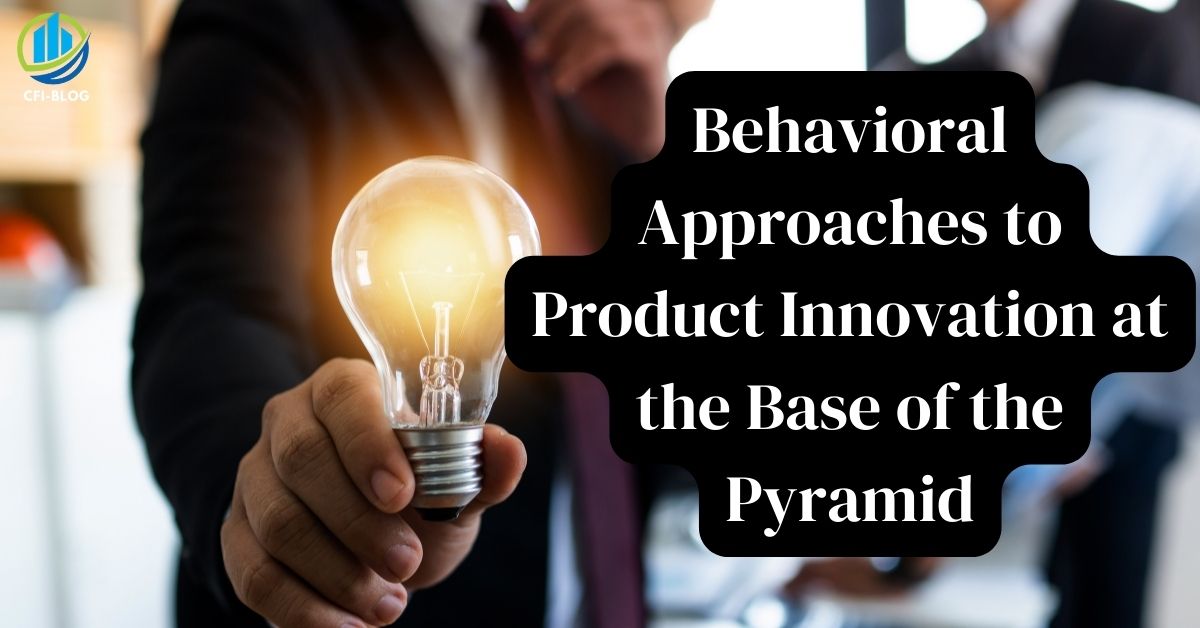The Base of the Pyramid (BOP) is part of the economy that contains lower-income groups, especially, people from rural areas, with the least income. They consist of four billion people in extreme poverty. Various institutions have introduced measures like product innovation, to uplift the condition of the poor and their condition. Most of the big private companies are working to boost the status of the economy by making their products more cheaper and affordable at the same time.
Though most companies focus on getting revenues from the middle class and wealthier sections of the economy, this poor segment of the population gets ignored most of the time, despite the fact that they have a good potential for getting profits. Financial exclusion is one of the biggest hurdles to development in this sector because more than 1.6 billion people around the world are still unbanked or without the benefits of any financial services. To remove these hurdles, it is very important to adopt new technologies and make the whole process more user-friendly and affordable.
How to Approach Financial Inclusion at the Base of the Pyramid?

We cannot just provide more financial amenities and services to further individuals in the belief that they will require them while using them if we are to achieve complete financial inclusion. To ensure that the clients are satisfied, we should instead invest the required money in the following actions:
- By working with our customers to develop and distribute these items, we can create a product that satisfies their needs, wants, and interests.
- By emphasizing taking any action rather than merely offering additional knowledge of product innovation, we can assist our customers in achieving the purposes and objectives they have towards their financial lives.
- Research and development is an example of product innovation, fintech for financial inclusion the path forward for Columbia, a new method of innovation for products and services that aims to accomplish this. The goal of psychosocial study and creation is to identify the deep individual as well as contextual drivers and influences of human behavior in order to improve the client-centered configuration of services and goods. It does this by trying to draw on perspectives from behavioral finance and fundamentals from life form layout.
- This method’s objective is to acquire profound compassion for individual desires and requirements while also thinking clearly of behaviors, that might be in opposition to people’s expressed preferences. It does not concentrate on individual preferences, opinions, or consumer research.
- In-depth surveys, empathetic and cognitive modeling, user journey mapping, as well as other methods targeted at a small, representative group of individuals have frequently utilized tools in this strategy. The use of a holistic approach like product innovation can aid in both improving our comprehension of the driving forces and suggestions for increasing poverty outreach and consequently alleviating the same which remains behind people’s present-day actions and improving our ability to forecast their future conduct if presented with novel choices.
What are the Barriers to Financial Inclusion?
- Customers’ goals for conserving money are ephemeral and abstract, whereas incentives and requirements related to their current financial situation appear urgent.
- Customers rarely have a plan or purpose when they create new retirement savings for the reason of saving money.
- Researchers created four low-cost, simple initiatives that changed when consumers opened an account and interacted using their bank deposits in order to address these behavior issues, such as why people aren’t saving money in Mexico.
- In particular, to assist clients in overcoming savings dormant, we developed a financial plan that included the main objective, strategy, the sense of having committed, and personalization for product design innovation.
How to Improve Financial Behaviour?

- Enhanced development and execution can be supported by gaining a thorough grasp of people’s motives, and the situational or ecological obstacles that impede them from fully attaining their aspirations. In the Philippines, this entailed helping clients create specific, ambitious spending objectives along with comprehensive plans of action to accomplish these objectives.
- Good implementation of time deposits results from the use of behavioral triggers that have been shown to work, which improves financial behavior. In this instance, we employed a number of levers to encourage better savings, including the main objective, the feeling of dedication, developing detailed plans, and personalizing the encounter.
- A thorough knowledge of present-day human nature requires the use of comprehensive research methodology, and lenders must encourage and promote the growth of this skill. We were able to test a number of financial behaviors assumptions through statistical analysis, like the financial inclusion in Nigeria lagging behind the process outside its own geographical location such as Europe, North America, and even Asia. This would have been challenging to verify through descriptive study only. Combining research techniques produced a more all-encompassing and thorough strategy for the product innovation strategy business invention.
- Even though the Philippines initiative was a triumph in the adventures in love and credit reporting, we have only just started investigating customer methods for financial intermediation. The goal of psychological study and development is to comprehend the mental, interpersonal, and ecological aspects that influence people’s experiences in new product innovation and implementation in public life.
Frequently Asked Questions (FAQs)
Q1. What is Innovation for the Bottom of the Pyramid?
The unfulfilled demands of the impoverished motivate them to find innovative solutions to the issues afflicting their communities. There are numerous instances of innovative initiatives that were developed effectively and efficiently to meet local requirements.
Q2. How can innovation at the Bottom of the Pyramid be positive?
International corporations can employ workers for a low cost without worrying about their rights or benefits. Many of the demands of the less affluent population can be satisfied by businesses that strive to uphold social responsibility.
Q3. What is an example of a Bottom of the Pyramid product?
The expanding microlending sector in South Asia, especially in Bangladesh, is one illustration of the “bottom of the pyramid.” The BiM money platform in Peru is doing extremely well among low-income groups being another example. It is becoming financially beneficial to “loan tiny sums of cash to persons with increasingly smaller assets” as a consequence of technology getting progressively less expensive and much more pervasive.
Q4. Who is the bottom of the Pyramid Products Consumers?
Customers at the pyramid’s bottom are more than merely the subject of social activity focused on alleviating poverty, enhancing well-being, and improving purchasing aspirations and capabilities. Also, the future four billion customers give a previously unheard-of chance for growth in creativity and the economy.
Bottom Line
Almost one-third of the world’s population falls under the bottom of the Pyramid with extremely lower income groups. In spite of the immense technological usage and development, still, 4 billion of the world’s population is devoid of basic financial services. Most of the time, the big corporate prefers to target the wealthier sections of the economy to target profit but the weaker section of the economy has great scope of making a profit. Hence, to make the services reachable to these sections of the people it is necessary to make the product innovation more affordable and convenient.
Author Profile

- Jonas Taylor is a financial expert and experienced writer with a focus on finance news, accounting software, and related topics. He has a talent for explaining complex financial concepts in an accessible way and has published high-quality content in various publications. He is dedicated to delivering valuable information to readers, staying up-to-date with financial news and trends, and sharing his expertise with others.
Latest entries
 BlogOctober 30, 2023Exposing the Money Myth: Financing Real Estate Deals
BlogOctober 30, 2023Exposing the Money Myth: Financing Real Estate Deals BlogOctober 30, 2023Real Estate Success: Motivation
BlogOctober 30, 2023Real Estate Success: Motivation BlogOctober 28, 2023The Santa Claus Rally
BlogOctober 28, 2023The Santa Claus Rally BlogOctober 28, 2023Build Your Team – the Importance of Networking for Traders
BlogOctober 28, 2023Build Your Team – the Importance of Networking for Traders

